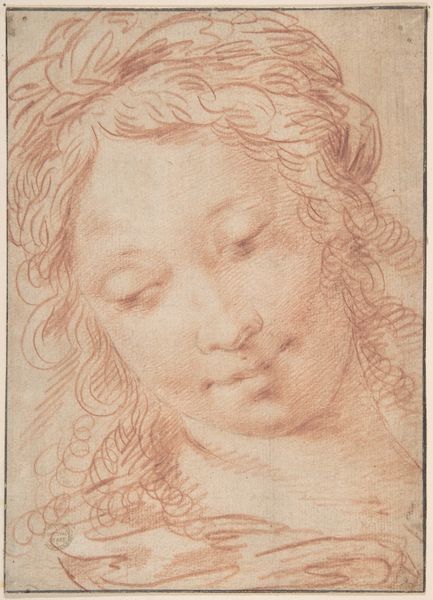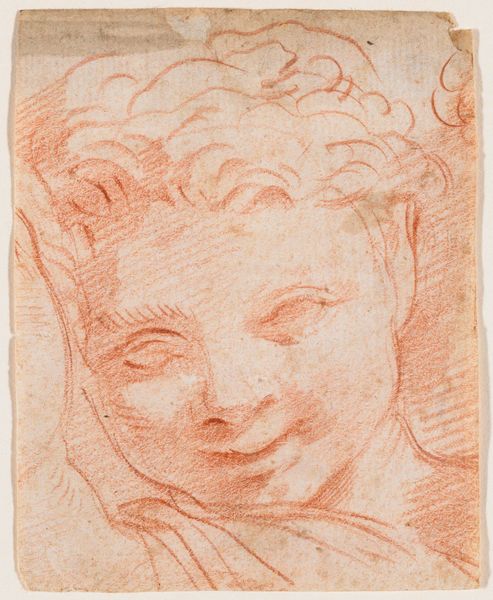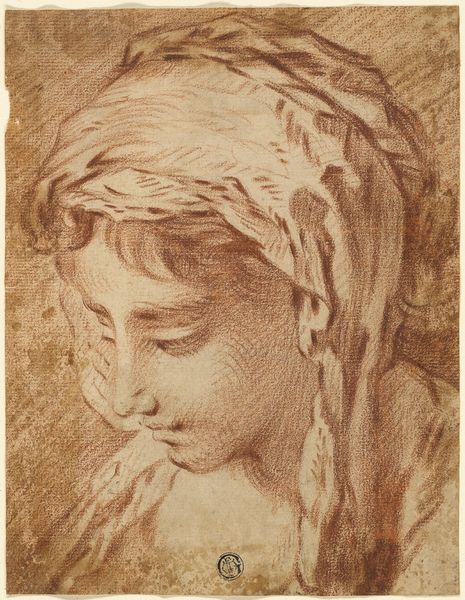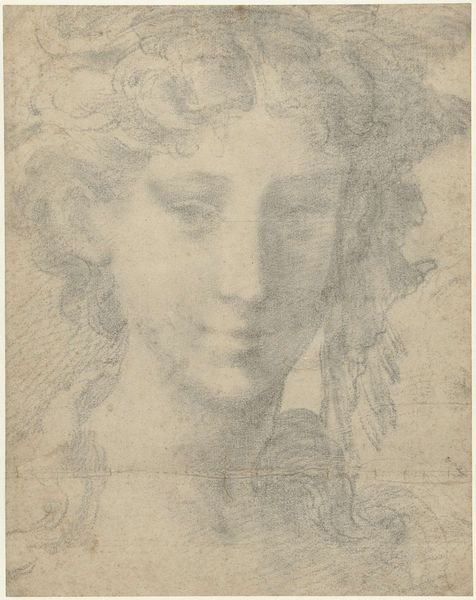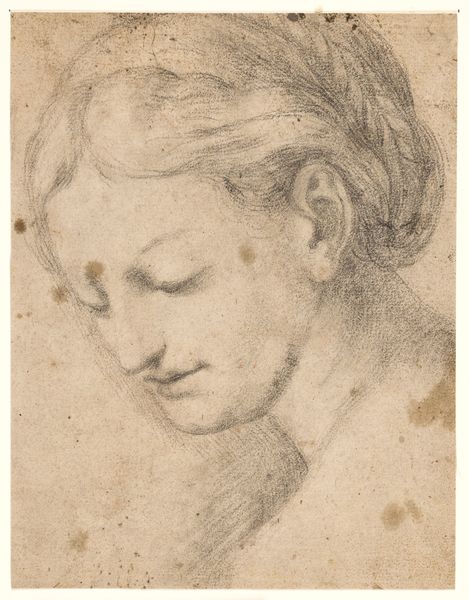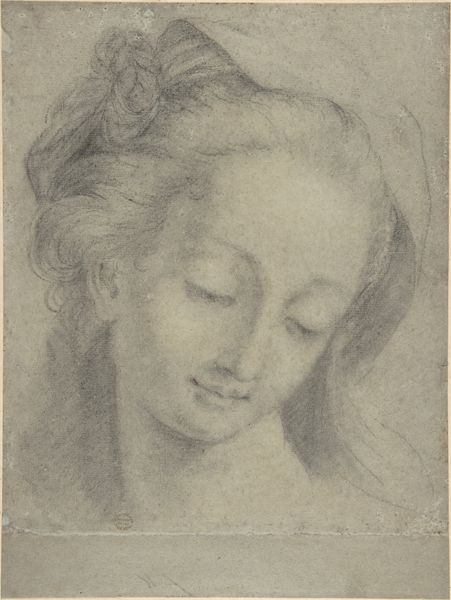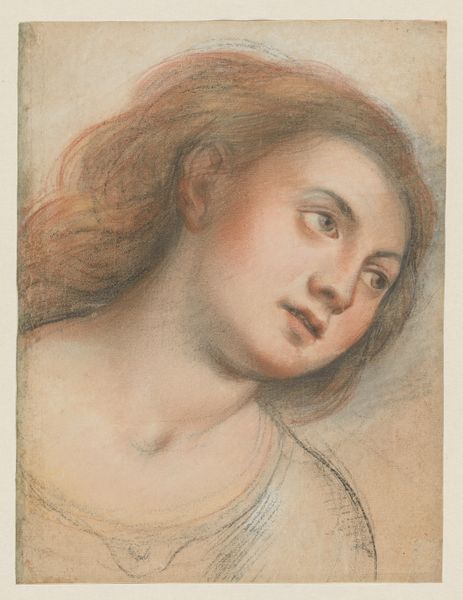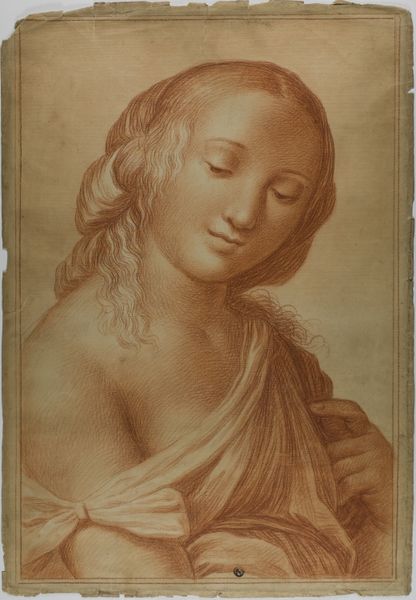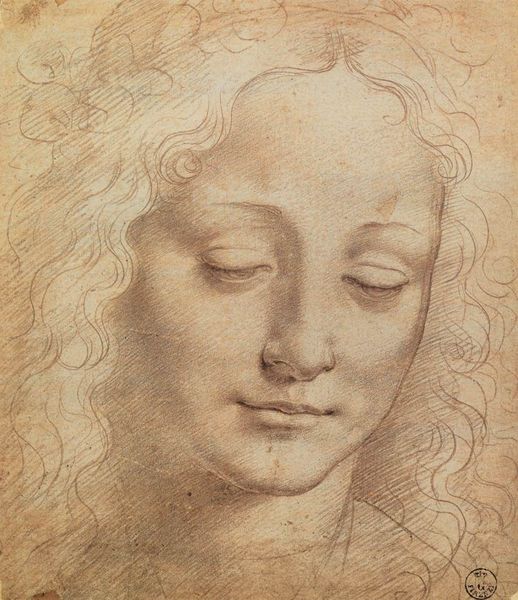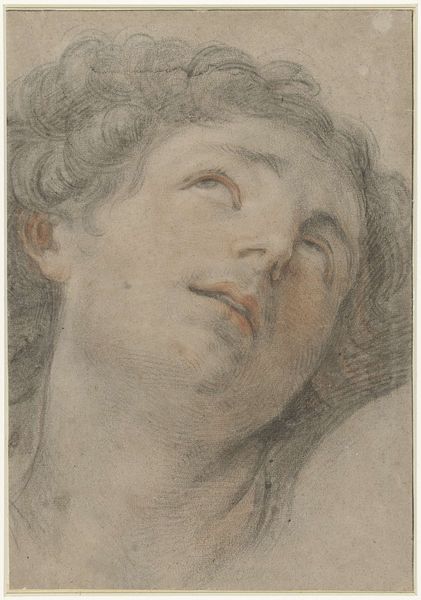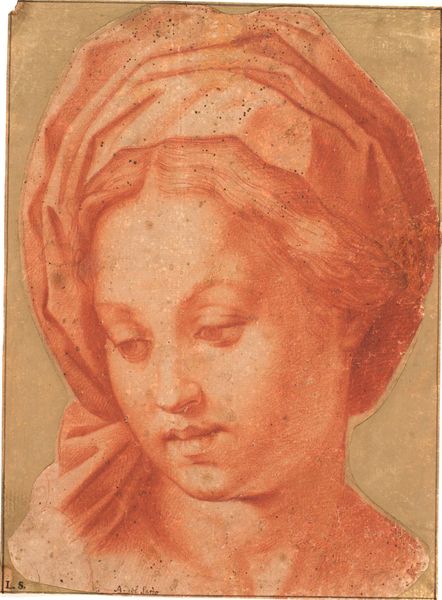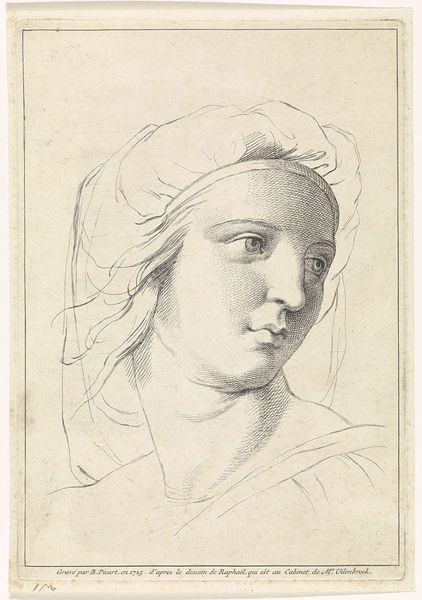
Head of a Young Woman in Three-quarter View Facing Right, with Lowered Eyes 1550 - 1600
0:00
0:00
drawing, pencil, charcoal
#
portrait
#
drawing
#
charcoal drawing
#
11_renaissance
#
charcoal art
#
pencil drawing
#
pencil
#
portrait drawing
#
charcoal
#
northern-renaissance
Dimensions: 6-5/16 x 4-1/8 in. (16 x 10.5 cm)
Copyright: Public Domain
Curator: We're looking at "Head of a Young Woman in Three-quarter View Facing Right, with Lowered Eyes," a drawing rendered in charcoal and pencil, likely created sometime between 1550 and 1600. Editor: The delicate shading gives it such a soft, almost dreamlike quality. You can almost feel the weight of her lowered eyelids. Curator: Absolutely. The way the anonymous artist utilized these materials speaks volumes. Consider charcoal, a readily available substance derived from burnt organic matter, coupled with pencil, allowing for finer details. There is something distinctly proletarian about its crafting. What could the conditions of labor or cultural perceptions of this model or the artist have been? Editor: Interesting thought! What kind of societal role was this woman occupying at the time? Given the conventions and social dictates that governed gender during the Renaissance, her quiet, almost passive pose could signify prescribed notions of feminine virtue – silence, obedience. The lowered eyes reinforce that. Curator: Indeed. Furthermore, let’s examine the paper itself – likely rag paper at the time. This means that discarded textiles were repurposed as a surface for artmaking. This raises questions regarding waste, resourcefulness, and artistic experimentation of its making and of similar artworks made with repurposed materials. Editor: I hadn’t thought about it that way. Her expression isn’t sad or submissive, though; it feels more… introspective, perhaps resisting the confines through an internal quietness. Maybe this rendering defies rigid categorization. Perhaps, by extension, so did this person. Curator: It's true, her expression has an enigmatic ambiguity. While situated within the frame of gendered expectations of that historical moment, there’s an undercurrent of individual presence that remains palpable. She almost invites us to imagine the socio-cultural factors informing her positionality. Editor: Ultimately, that might be why this seemingly simple sketch holds so much power. We are peering into a specific time and place through a particular and unique lens. It’s almost as if the texture of the charcoal on the textured paper carries all these layers.
Comments
No comments
Be the first to comment and join the conversation on the ultimate creative platform.
